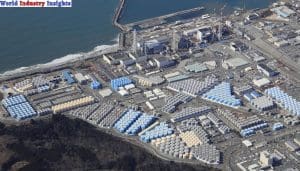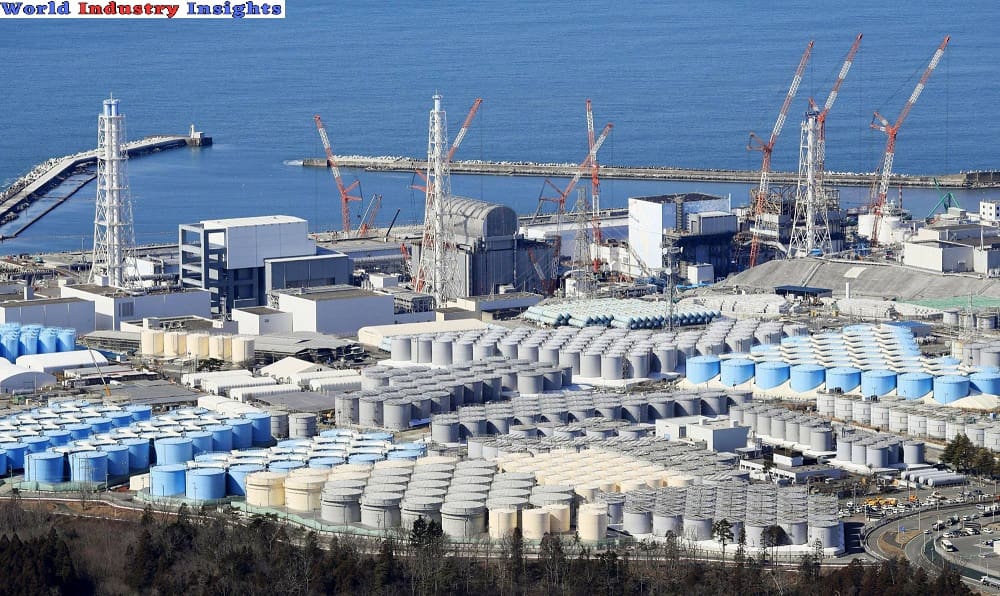Fukushima Water Release: In the picturesque coastal town of Iwaki, Japan, the serene beauty of Usuiso beach should be attracting throngs of tourists and bustling businesses during beach season. However, an ominous specter looms over this idyllic scene the tsunami-hit Fukushima Daiichi nuclear power plant, which plans to release treated radioactive wastewater into the sea, sparking both domestic protests and international concern.
A dozen years after the nuclear disaster, Fukushima residents still grapple with the haunting fear of water discharge. The prospect of releasing radioactive water threatens to further damage Fukushima’s reputation, livelihoods, and businesses, all of which are still striving to recover from the aftermath of the catastrophe.
Among those anxiously watching the situation unfold is local innkeeper Yukinaga Suzuki, who runs the Usuiso beach inn. He knows that his livelihood hangs in the balance, as a healthy ocean is vital to his business’s survival. Along with fellow residents, Suzuki has pleaded with authorities to postpone the water release until at least mid-August, when the swimming season ends. Regrettably, the government has kept the start date undisclosed, leaving the residents feeling powerless and resigned to the concept of shikataganai, or helpless acceptance.
The proposed water release involves treating accumulated contaminated water and diluting it with seawater before discharging it into the Pacific Ocean via an undersea tunnel. Both the plant’s operator, TEPCO, and the government assert that this method adheres to national and international safety standards. However, residents remain skeptical, asserting that the potential risks associated with the release have not been adequately addressed.
Of particular concern is the fact that Usuiso beach lies directly in the path of the treated water, which travels south on the Oyashio current from Fukushima Daiichi. Locals like Suzuki worry that this release could cause irreversible damage to the beach’s delicate ecosystem.
Ever since the 2011 nuclear disaster, Fukushima Daiichi has struggled to manage massive amounts of contaminated water resulting from leaks in the radioactive water used to cool the melted reactors. With over 1,000 tanks reaching capacity, the water must be removed to decommission the plant and prevent further leaks.

Read More: Iran Heatwave Crisis: Adapting to Unbearable Temperatures
The seafood industry in Fukushima, represented by business owner Katsumasa Okawa, is more concerned about the contaminated water tanks than the treated water releases. Given their colossal size, Okawa advocates for their prompt removal, fearing that any tank leak could devastate the area and tarnish Fukushima’s already fragile reputation.
The plan to release the water faces fierce opposition from South Korea and China, while Japan seeks support from the International Atomic Energy Agency (IAEA) to demonstrate transparency and credibility. China has even planned to tighten restrictions on Japanese seafood imports due to their concerns, and Hong Kong intends to ban Fukushima and other Japanese aquatic products if the release proceeds.
Japanese fishing organizations are deeply concerned about the potential ramifications on their seafood’s reputation amidst the controversy. The water release threatens to hamper Fukushima’s fisheries recovery. In response, the government has allocated 80 billion yen ($573 million) to support the fisheries and seafood processing industry and repair its reputation.
This month, the IAEA released its final report, supporting Japan’s water release plan and deeming it scientifically and environmentally safe. The report contends that radioactivity in the treated water is nearly undetectable and has minimal impact on health and the environment. However, some experts advocate for closer scrutiny of numerous low-dose radionuclides that still exist in the water, as their long-term effects on the environment and marine life remain unknown.
While proponents argue that tritium, a radionuclide inseparable from water, will be diluted to stay within national discharge limits, experts stress the need for strict procedures and extensive sampling to build public trust. University of Tokyo environmental chemistry professor Katsumi Shozugawa urges thorough sampling and cross-checks to reassure the public.
Years of research by Shozugawa have shown that small amounts of radioactivity from Fukushima Daiichi leak into groundwater and the port. He asserts that these leaks should be prioritized over controlled water release. TEPCO, on the other hand, denies reactor leaks and attributes high cesium levels in port fish to sediment contamination from initial leaks and rainwater drainage.
Local fisheries cooperative executive Takayuki Yanai emphasizes the need for public support for the water release. He contends that releasing without public understanding could severely damage Fukushima’s fisheries’ reputation and fragility. Yanai underscores the importance of trust for a safe and successful water release.
The world is eagerly awaiting Japan’s pivotal decision. The Fukushima water release has significant implications for neighboring countries and international stakeholders. While the government is launching an awareness campaign to highlight release safety, residents and experts are demanding comprehensive, transparent procedures to instill trust.
Amidst its ongoing recovery journey, Fukushima faces yet another daunting challenge. This controversial water release will shape the fate of its communities, businesses, and reputation.
Our Reader’s Queries
Is Fukushima still leaking?
In 2011, a devastating earthquake and tsunami wreaked havoc on the Fukushima Daiichi plant, destroying its cooling systems and causing three reactors to melt. As a result, the cooling water became contaminated and has been leaking ever since. To contain the contaminated water, it is collected, filtered, and stored in around 1,000 tanks. However, these tanks are expected to reach their maximum capacity by early 2024.
Can tritium be removed from water?
Removing tritium from water is a challenging task due to its similar properties. Despite extensive research, experts have yet to develop a technology that can effectively separate tritiated water from treated water with low concentrations and large volumes. This makes it a complex and difficult process that requires specialized expertise.
How close was Fukushima to the ocean?
The Fukushima Daiichi plant’s reactors, particularly the emergency diesel generators that power cooling water pumps, were situated too close to sea level. The plant is situated on a bluff that was 35 meters (115 feet) above the normal sea level before the reactors were built.
Is it safe to travel to Japan now Fukushima?
It goes without saying that Fukushima is a safe destination for tourists to explore.

